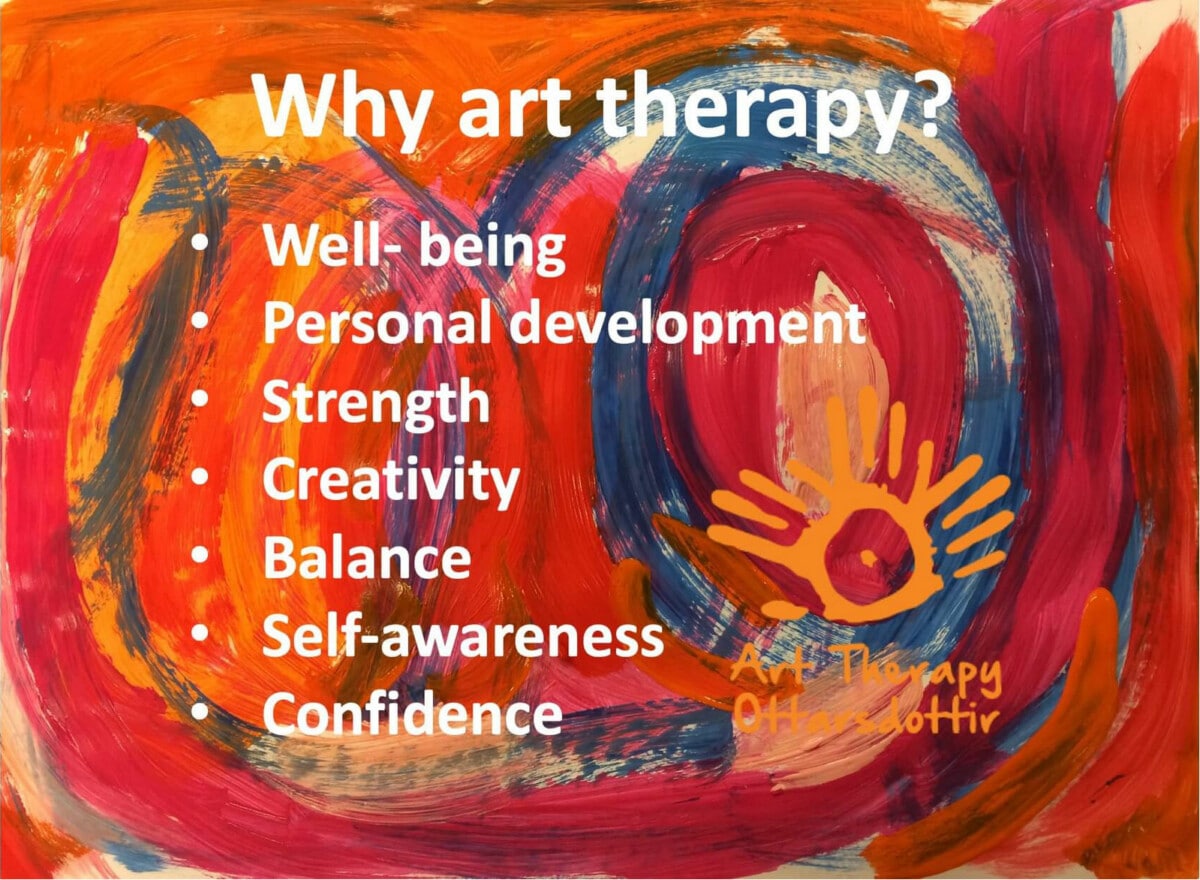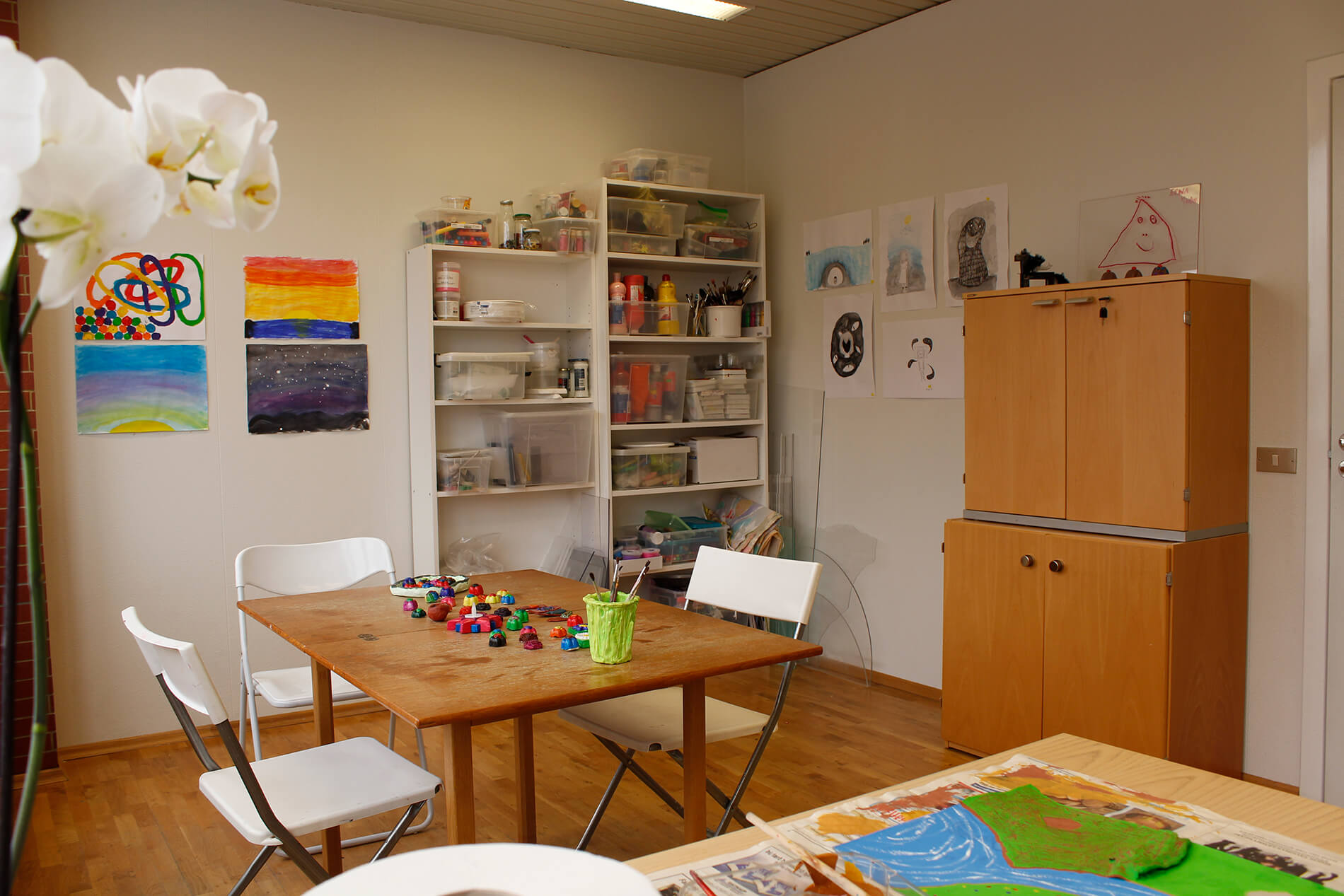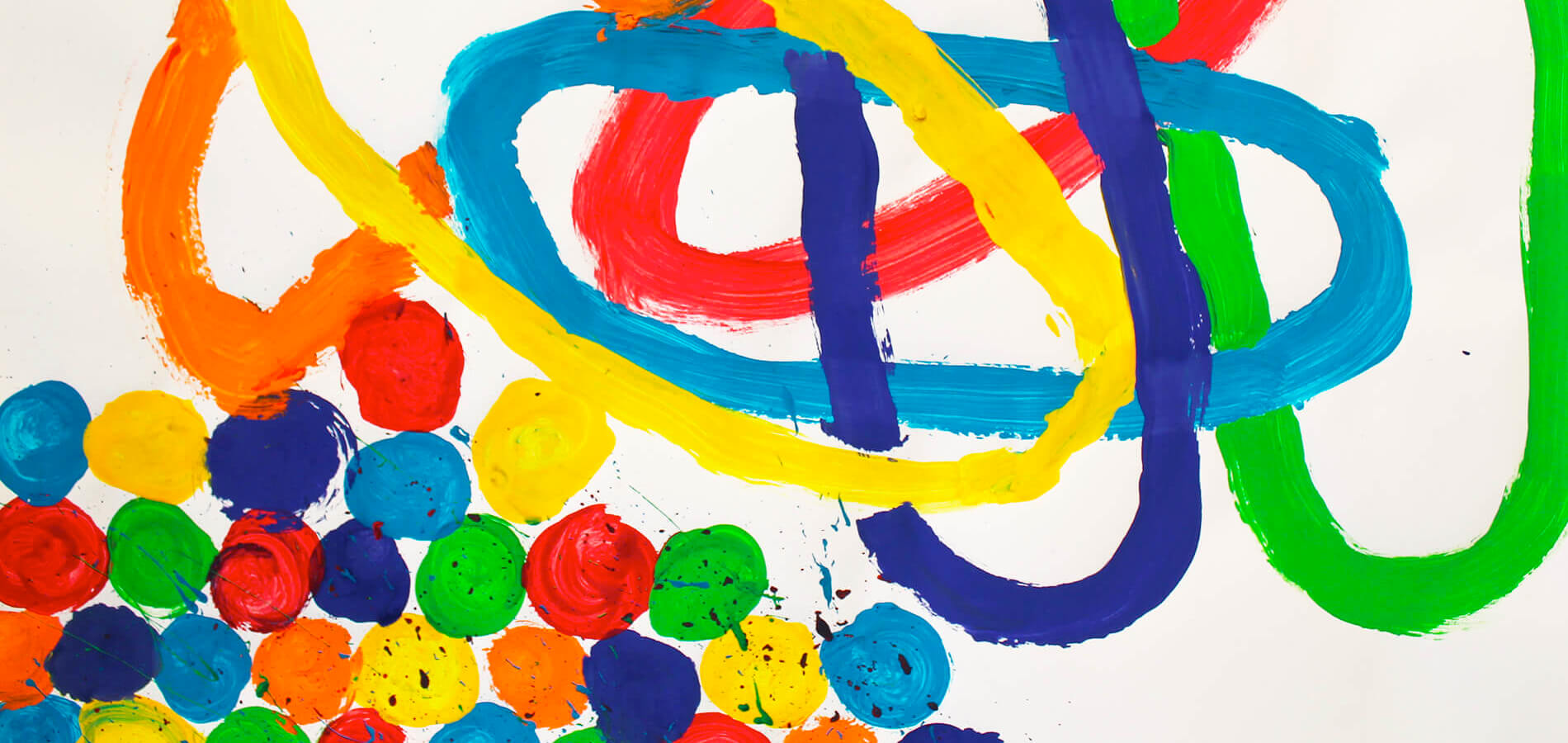
Art therapy sessions are offered at Art Therapy Ottarsdottir studio.
Online art therapy is also offered over the Internet. The treatment takes place via Skype or Zoom in a location which is suitable for the individual. The client has simple art materials available, such as paper and crayons, while the session takes place.“
Art therapy is a form of psychotherapy that focuses on art making as a means of dialogue, expression and emotional processing, in the company of an art therapist.
The aim of art therapy is to facilitate well-being, personal development, strength, creativity, balance, self-awareness, confidence, social skills and positive life changes for the individual who receives treatment.
The art making in art therapy is spontaneous and free, and it can express the individual’s inner world in terms of emotions, thoughts and experiences. There are no requirements regarding the client’s prior experience or knowledge of art. Visual expression can in many cases work better than words for expressing complex emotions, thoughts and memories. An individual who is dealing with certain problems, emotions and thoughts can transfer these issues outward and into the artwork, rendering the problem visible and tangible. This aspect of art making, along with the symbolic language that emerges in the process, offers the individual an opportunity to express and view issues and related emotions from a safe and manageable distance, which then allows him or her to more safely engage with and process sensitive emotions and life experiences. The artwork can reflect the individual’s mental and emotional states, which increases his/her self-awareness. Creativity, initiative, independence, spontaneity, problem-solving, overall balance and acceptance, potentially increases through the art-making process.
The cornerstone of art therapy is the relationship between the client and the art therapist, coupled with the art-making process. The art therapist endeavours to build trust and safety through being present, listening, understanding, observing the underlying problem and other accompanying issues, and placing them in a non-judgemental context. This process facilitates a sense of safety that allows the client to create a foundation of trust with the art therapist in order to be able to share emotions, thoughts, experiences, joys, successes, fears and fantasies. The therapeutic relationship facilitates well-being, healthier relational patterns, social skills, self-awareness, personal insight, contentment, balance and strength.
The art therapist, who is bound to confidentiality, offers a quiet and safe space for the client, who in turn commits to participate in therapy sessions over a specific period of time. The non-judgemental views and attitude of the art therapist are important and, together with confidentiality and listening, the therapist provides a safe space and regular therapy sessions over an agreed time period aiming for ensuring that the client feels safe enough to process complex and difficult emotions.

In many cases the client discusses the artwork with the art therapist. Through the dialogue about the client’s art, an association is formed between non-verbal visual thinking and verbal expression of the artwork’s content. When a connection between images and words is established, the individual can often activate previously unapplied characteristics which allows him/her to arrive at a broader perspective of the given subject in question. This kind of interplay between images and words creates a space where the individual can in many cases find solutions, work with them and move forward.
Art therapy is suitable for individuals of all ages who may, for example, suffer from emotional problems, mental disorders, disabilities and/or physical illness. In many cases, individuals find it easier to express complex emotions, thoughts or memories by means of imagery than through verbal expression. Given that a large part of the expression in the art therapy treatment takes place non-verbally, it is particularly well suited for children and individuals with impaired language development.
Art Therapy is suitable for all those who want to work with their emotions and experiences to pursue self-development through artistic expression.
Individuals who seek art therapy might be suffering from the following conditions:
Art therapy education is comprised of theories regarding art making, psychotherapy, psychoanalysis, the art therapy student’s emotional processing, and the experience and awareness of one’s own art making. In most cases, art therapy students attend their own personal therapy. The art therapy educational programme includes fieldwork under the supervision of an experienced art therapist, psychotherapist or psychiatrist.
Art therapists work with individuals, groups and families in diverse settings, such as in schools, hospitals, prisons, private practice, homes for the elderly and crisis centres, as well as in galleries and museums.
